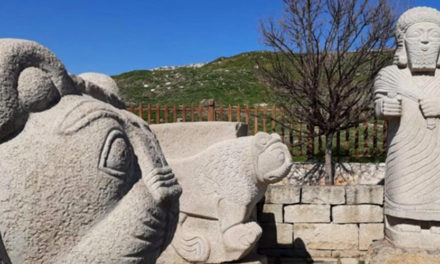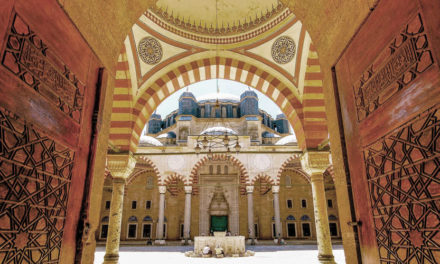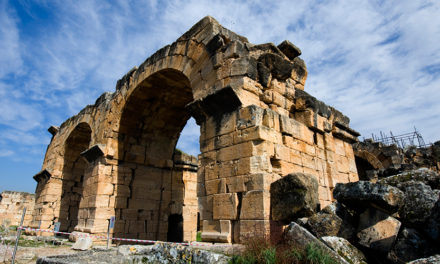Located in the Germuş mountains of south-eastern Anatolia, this property presents monumental round-oval and rectangular megalithic structures erected by hunter-gatherers in the Pre-Pottery Neolithic age between 9,600 and 8,200 BCE. These monuments were probably used in connection with rituals, most likely of a funerary nature. Distinctive T-shaped pillars are carved with images of wild animals, providing insight into the way of life and beliefs of people living in Upper Mesopotamia about 11,500 years ago.
Göbekli Tepe is located in Upper Mesopotamia, a region which saw the emergence of the most ancient farming communities in the world. Monumental structures, interpreted as monumental communal buildings (enclosures), were erected by groups of hunter-gatherers in the Pre-Pottery Neolithic period (10th-9th millennia BC). The monuments were probably used in connection with social events and rituals and feature distinctive limestone T-shaped pillars, some of which are up to 5.50 meters tall. Some of the pillars, which are abstract depictions of the human form, also feature low reliefs of items of clothing, e.g. belts and loincloths, as well as high and low reliefs of wild animals. Recent excavation works have also identified the remains of non-monumental structures which appear to stem from domestic buildings.
Criterion (i): The communities that built the monumental megalithic structures of Göbekli Tepe lived during one of the most momentous transitions in human history, one which took us from hunter-gatherer lifeways to the first farming communities. The monumental buildings at Göbekli Tepe demonstrate the creative human genius of these early (Pre-Pottery Neolithic) societies.
Criterion (ii): Göbekli Tepe is one of the first manifestations of human-made monumental architecture. The site testifies to innovative building techniques, including the integration of frequently decorated T-shaped limestone pillars, which also fulfilled architectural functions. The imagery found at Göbekli Tepe, adorning T-pillars and some small finds (stone vessels, shaft-straighteners, etc.), is also found at contemporaneous sites in the Upper Mesopotamian region, thus testifying to a close social network in this core region of Neolithisation.
Criterion (iv): Göbekli Tepe is an outstanding example of a monumental ensemble of monumental megalithic structures illustrating a significant period of human history. The monolithic T-shaped pillars were carved from the adjacent limestone plateau and attest to new levels of architectural and engineering technology. They are believed to bear witness to the presence of specialized craftsmen, and possibly the emergence of more hierarchical forms of human society.
Integrity
Göbekli Tepe contains all the elements necessary for the expression of its Outstanding Universal Value and is of adequate size to ensure the complete presentation of the features and processes which convey its significance.
The physical fabric of the property is in good condition and the processes of deterioration are monitored and carefully controlled.
The conditions of integrity are potentially vulnerable in the buffer zone and wider setting of the property due to the future infrastructure projects (railway line) and the increase in visitor numbers likely to be generated.
Authenticity
The megalithic structures have largely retained the original form and design of their architectural elements, together with numerous decorative elements and craft works that provide an insight into the way of life of the societies that occupied the site. The results of more than twenty years of research and archaeological excavations on the site testify to its authenticity. Excavations and research under way since the mid-1990s also provide a more balanced and detailed view of the relationship between the various aspects of usage and the prehistoric importance of the property.
and submits proposals for decision-making and the implementation of the plan. A Coordination and Audit Board, also set up in 2016, examines and approves the draft master plan.





